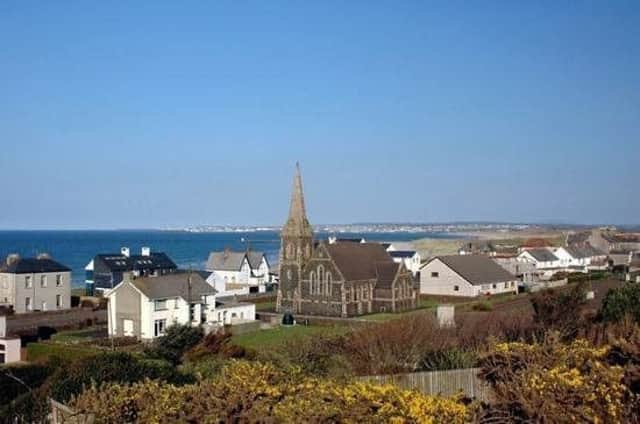Castlerock: creating the village


John began by explaining that most villages grow from settlements formed around environmental or social structures: a natural harbour; a river crossing; a fortified area, and so on.
For Castlerock, it was a very different beginning. The village has its origins partly due to the building of the Downhill palace in the late 1700s and partly thanks to the railway a hundred years later.
Advertisement
Hide AdAdvertisement
Hide AdAs historically recent as the 1830s, the ordnance survey maps show in clear detail the 1612 village of Articlave, the 1690 Hezlett House and even three fisherman huts at the barr mouth, but no Castlerock. Ten years later, the railway was slowly connecting towns in the North West. Ballymena, Ballymoney and down to Coleraine, with the Londonderry to Coleraine line working its way along the coast and tunnelling through the cliff face below the Mussenden Temple. There was still no Castlerock, although one house is shown.


In 1866 Sir Hervey Bruce had plans drawn up for houses to be built forming a main street parallel to the railway line. To encourage the building and movement to taxpaying families into new area around the station, the railway company offered a 10 year free railway ticket (known as a ‘Golden Ticket’) for people travelling from Coleraine or (the better value option) from Londonderry if their destination was Castlerock Station. As the housing stock developed, so the station name came to be associated with the newly growing village.
1901 saw the creation of the Castlerock Golf Club. In the 1930s the Golf Hotel opened and encouraged holiday makers and golfers to the village. By the 1960s Castlerock boasted an outdoor, heated swimming pool, further enhancing its name as a first rate seaside holiday destination. Thousands for National Trust visitors walk the Downhill Palace grounds and the train still brings its passengers to the village - the village that got its name from a station, and has its origins with the descendents of the Earl Bishop.